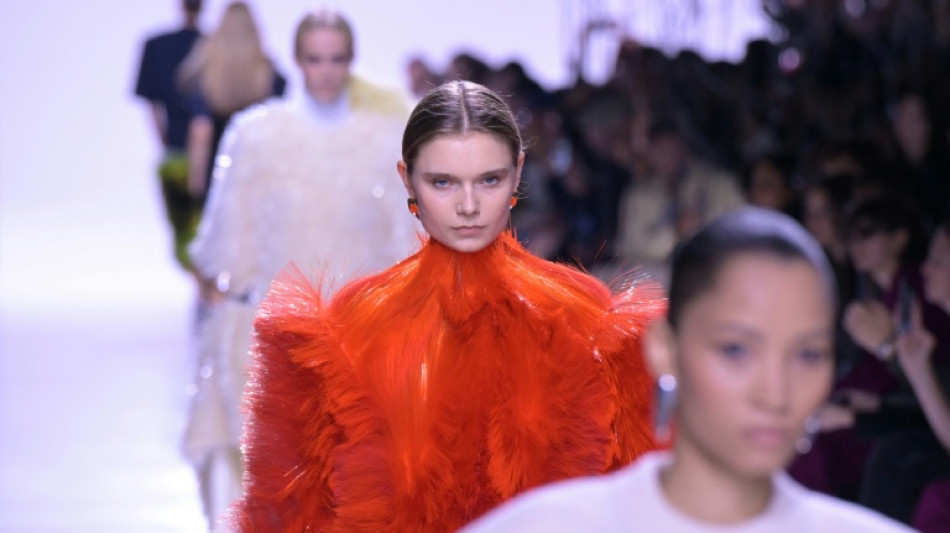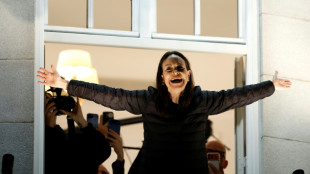
Women designers 'not getting the breaks' despite global fashion shake-up

In fashion at the moment, as seen on catwalks: frills, corsets, big shoulder pads, and "naked dresses". Out of fashion: employing women as chief designers.
In the most recent Spring-Summer 2026 womenswear Fashion Weeks in Paris and Milan, the effects of a huge reshuffle at the top of the European luxury clothing industry were plain to see.
From Chanel, Dior, Celine, Balenciaga, Loewe to Jean Paul Gaultier, around 10 leading labels unveiled debut collections from new artistic directors.
In Milan, heavyhitters Gucci, Versace and Bottega Veneta spotlighted freshly appointed designers too.
On only one occasion, the new face taking the bow and applause at the end was a woman -- Britain's Louise Trotter at Bottega Veneta -- while Matthieu Blazy at Chanel and Jonathan Anderson at Dior both replaced high-profile female predecessors.
"It seemed that there was a bit of an opening (for women) just before Covid," Karen Van Godtsenhoven, a fashion academic at the University of Ghent in Belgium and guest curator for the 2023 exhibition "Women Dressing Women" at New York's Metropolitan Museum of Art.
"But I think Covid played a role in society at large in bringing back more conservative and reactionary ways of thinking. For the fashion industry it has meant going back to the old certainties of the male solo designer," she added.
Dana Thomas, an American fashion writer and author of "Deluxe: How Luxury Lost its Luster", puts the retreat down to the fact that the highly concentrated industry is dominated by conservative elderly male owners at LVMH, Kering and Chanel.
"I think that Chanel missed a really big opportunity in not hiring a woman to run a house that was founded by the most famous woman and influential person in fashion," she told AFP, referring to Gabrielle "Coco" Chanel.
She lists other labels created by illustrious 20th-century female designers -- Lanvin, Nina Ricci, Schiaparelli or Celine.
"They all have men as creative directors now," she said.
Recently appointed Sarah Burton at LVMH-owned Givenchy and Maria Grazia Chiuri at Fendi, named this week, are the only exceptions in the new boys club running major labels.
Family-owned Hermes, which has had two women in charge of its lines for more than a decade, announced on Friday that its menswear designer Veronique Nichanian was stepping down after 37 years.
- Male myth? -
The reasons for the male domination at the top of the industry are multiple.
"There is a glass ceiling for women in most industries, so in that sense luxury fashion is no exception, but it has its own specificities," explained Frederic Godart, a professor at French business school INSEAD and author of "Unveiling Fashion".
He cites the "historically male dominated" leadership of the industry, as well as its punishing work culture and pay inequalities that make it more difficult for women to rise to the top.
He called the absence of women in the latest mega-round of job changes "quite glaring" given that the industry "has collectively and in many instances claimed it cares about diversity."
The third reason he cites is the myth of the "male genius designer" which continues to influence decision makers.
The two most recent women designers at Chanel (Virginie Viard) and Dior (Maria Grazia Chiuri) were both widely seen in the industry as transitional or continuity figures, Van Godtsenhoven said.
She believes women are still consigned to roles of "craft" -- they are overwhelmingly present at all levels of the production process -- while men are seen as the "fashion" visionaries.
"I just think it's a cliche that remains in the heads of people. And I think it's very damaging, both to men and women in the industry," she explained.
- New generation -
As fashion schools continue to churn out a majority of women designers, there is no lack of female talent in the industry either.
In management positions, they are well represented, with Chanel, Gucci and Dior run by women (Leena Nair, Francesca Bellettini, and Delphine Arnault respectively).
Figures from luxury giant Kering show that women hold 58 percent of its management positions and are half of its executive board.
LVMH did not respond when contacted for comment.
Given the difficulties of rising to the top, experts say talented female designers like Iris van Herpen, Molly Goddard or Simone Rocha are instead taking the route of other women designers like Donna Karen -- starting their own labels.
"There's a whole generation of women who are really, really good, and they're just not getting the breaks," said Thomas.
T.Gil--SG

 London
London

 Manchester
Manchester
 Glasgow
Glasgow
 Dublin
Dublin
 Belfast
Belfast
 Washington
Washington
 Denver
Denver
 Atlanta
Atlanta
 Dallas
Dallas
 Houston Texas
Houston Texas
 New Orleans
New Orleans
 El Paso
El Paso
 Phoenix
Phoenix
 Los Angeles
Los Angeles



